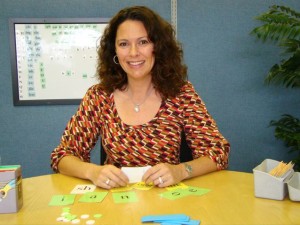
Reading Comprehension Help
Reading comprehension is not an easy activity. In fact, it can be really hard work! Did you know that without proper interventions, 74% of the children who are poor readers in third grade remain poor readers in the ninth grade? Reading comprehension impacts all subjects in school including literature, science, social studies and even math. For students to do well academically, they must be able to comprehend the material they are reading. Reading research shows that good readers:
- are active readers and have goals in mind as they are working through a text.
- make predictions about what is to come
- look over the structure of the text before they read to determine which sections are the most relevant to their reading goals.
- read selectively, determining which sections to read carefully , which to read quickly, which not to read, and so on.
- construct, revise, and question the meanings they make as they read.
- try to determine meaning of unfamiliar words and concepts in the text.
- read various types of texts differently. In narrative, a good reader pays close attention to the setting and characters but in expository text, a good reader frequently summarizes what they have read.
- Feel a sense of satisfaction and productivity after reading a text
Research according to the National Reading Panel 2000, has proven that explicit and direct instruction is the core of good reading comprehension. Children need to learn to use comprehension strategies before, during and after they read. Here are a few research-based strategies that help students become active readers:
Predictions
Students are encouraged to generate expectations about what characters might do, or how the plot might evolve, based on their own experiences in similar situations. Making a prediction activates the student’s prior knowledge and therefore provides a foundation for any new information they will learn while reading. This prior knowledge facilitates their understanding of new ideas encountered in text. Researchers in the field of reading comprehension (Anderson, Wilkinson, Mason, & Shirey, 1990) found that prediction activities promoted overall story understanding if the predictions were explicitly compared to text ideas during further reading. Some activities that support predicting include:
- read the title of the book and discuss what clues about the story does the title provide
- discuss the illustration on the cover and ask student what it makes them think of
- discuss if this is a real or make-believe story
Think-aloud
Think-aloud involves making one’s thoughts audible and saying what you are thinking while you are reading. This strategy has been shown to improve students’ comprehension when both students themselves engage in the think-aloud and when teachers also use think aloud while reading to students. A study by Bereiter and Bird (1985) showed that students who were asked to think aloud while reading had better comprehension than students who were not taught to think aloud, according to a question-and-answer comprehension test. Another study by Silven and Vauras (1992) demonstrated that students who were prompted to think aloud as part of their comprehension training were better at summarizing information in a text than students whose training did not include think-aloud. An example of a think aloud goes something like this:
The teacher reads a section of a text and talks out loud to the children to show that he/she is engaged and reading actively.
- “This reminds me of a time when I…”
- “I wonder why…”
- “I know about this topic because I…”
Story Structure
Story structure involves how stories and plots are organized. Essentially every reader is taken down a path with characters, a setting, some sort of activity or conflict and a resolution. Understanding this structure of the story or plot is conducive to understanding and deriving meaning from literature. It enables the child to organize in his or her mind what exactly they are reading. Some activities that support story structure include:
- create and fill out a chart detailing the four parts of a story, including the characters, plot, conflict, and resolution.
- draw or write a comic strip recreating the story
- Use a graphic organizer or story map to chart out the structure of the story
Visualization
Visualization involves picturing in your mind what is happening in the text. This can help transform students from passive readers to active readers while simultaneously improving their reading comprehension. By vividly visualizing the events depicted in the text, creative readers allow themselves to become part of the story; they see the colors, hear the sounds, feel the textures, taste the flavors, and smell the odors the writer describes. The more the students practice this strategy, the more automatic it becomes during reading. Some activities that support students in visualizing include:
- sketch a picture while reading or listening to a descriptive story.
- look at wordless picture books and then write the words that would create the pictures in the books.
- dramatize a story
Summarization
To summarize a student needs to be able to pull out the main idea, focus on key details, use key words and phrases, and break down the larger ideas. Summarizing is an extremely difficult task for most students. Many children require instruction and practice in summarizing before they are able to produce good oral and written summaries of text. Some activities that support summarizing include:
- take articles from a newspaper and cut off the headlines and then have students write their own headlines of the story.
- with different colored highlighters have students underline key words, phrases, vocabulary and ideas that are relevant to understanding the text.
- use a graphic organizer with Who, What, When, Where, Why, and How.
Success in school and beyond depends in great measure upon the ability to read with strong comprehension. When students make connections to the text they are reading, their comprehension increases. Good readers constantly try to make meaning out of what they read by seeing how it fits with what they already know. When we help students make those connections before, during, and after they read, we are teaching them critical comprehension strategies that the best readers use almost instinctively.
Learn more about the New PRIDE Reading Program
Karina Richland, M.A. is the Founder and Director of PRIDE Learning Centers, located in Los Angeles and Orange County. Ms. Richland is a certified reading and learning disability specialist. Ms. Richland speaks frequently to parents, teachers, and professionals on learning differences, and writes for several journals and publications. You can visit the Pride Learning Center website at: www.pridelearningcenter.com





